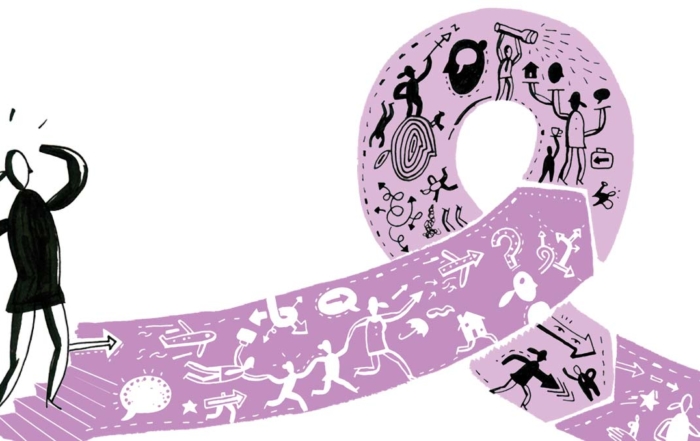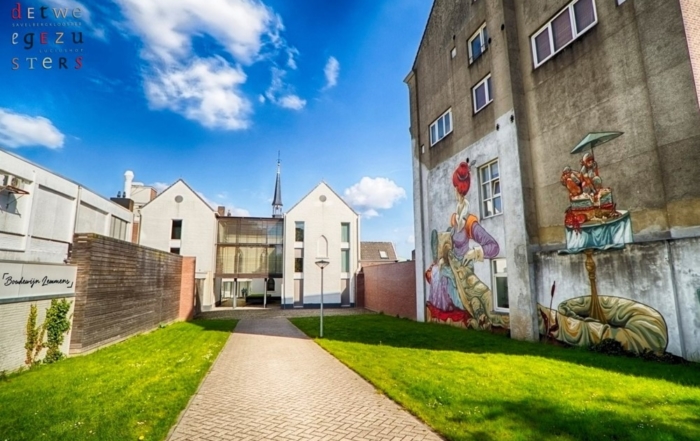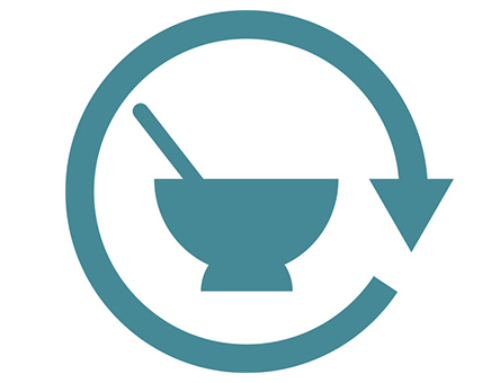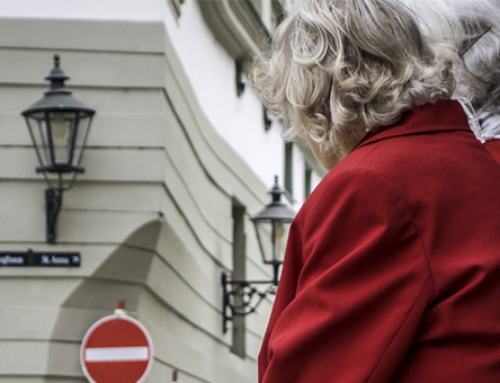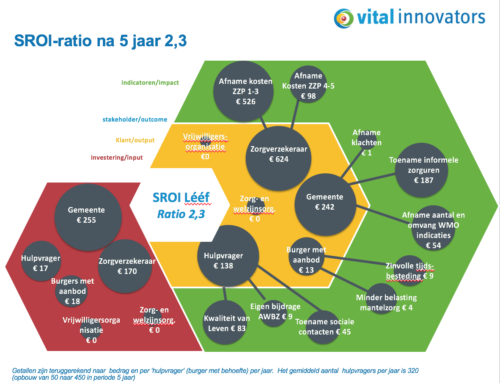Irrational end-user behavior is difficult to predict. To map the wishes that arise from this behavior, a qualitative approach is required. In some cases, the way of trial & error necessary.
Intention
Existing home care organizations are only allowed to perform medically necessary actions due to budget cuts and are having great difficulty finding sufficient care providers. At the same time, it is expected that in 2040 the number of people over 80 living alone will have doubled. Then there will only be two workers for every pensioner in the Netherlands. The partners, children and relatives of dependent elderly people must take over the role of the withdrawing government. However, this poses major problems for these carers. As an example: 40% of carers caring for someone with dementia suffer from symptoms of severe depression (source: VUmc, May 2017).
In this light, we wanted to provide an answer to the question with the Dinst organisation: “Who goes the daily, non medical, take on support for frail older people if the informal caregiver is not (langer) can or will?”. From many interviews we received confirmation that informal carers would like to hand over some tasks to "regular faces at home". Dinst wanted to be the counter for reliable services at home. The intention was to provide very good service and a competitive price, demonstrate that people are willing to pay for support at home. Unlike other organizations in the elderly care, Dinst could reach the carers. This thanks to refreshing contemporary marketing and communication.
Approach
The two founders of Dinst first investigated the problem through many interviews with the target groups (elderly, informal carers and potential service providers) to confiscate. In the meantime they built a first version of an online platform. This in a multidisciplinary team of approximately six motivated and socially driven people. Dinst then started as an online marketplace with professionals such as home hairdressers, beauticians and handymen at home with the elderly. Dinner had plenty 150 service providers who were personally screened and introduced themselves online. This came with an introductory video, Prices, availability and reviews.
Result
Despite a strong team and enormous commitment, it was not possible to realize the stated growth. However, this was badly needed to build up commercial existence. We have gone through two online routes to reach the target group. Directly to the consumer via dinst.nl and by offering our offer on other websites. In addition, we have also sold our platform as a 'white label SaaS' solution to large home care organizations: the software and equipment associated with the marketplace could thus be used by the home organizations under their own flag. In addition to data-driven online marketing, Dinst was also present in the neighborhood with various activities. The largest number of new customers came from relationships with general practitioners.
Despite the fact that customers call their service providers by an average 8,7 rated, we failed to build a relationship with the customers. In retrospect, we can say that customers for these infrequent services (a handyman might come by twice a year, a hairdresser every six weeks) only want to get in touch with the right service provider. They may not need further involvement from Dinst. We decided not to use up investors' money due to lack of revenue, but to switch to another model with one type of service. The Home Service was born: a familiar face at home for all daily tasks.
A price of € 19.95 per hour seemed to us 75% of the people over eighty in the Netherlands easily pay. Especially because people with a PGB (personal budget) could also visit Dinst. Dinst had a clear added value due to the continuity and quality offered within the weekly, sometimes daily, support at home. In conversations with informal carers, it appeared that they considered additional support necessary and affordable. The elderly (80+) from now on, however, think differently, according to research among 685 older members of a public home care organization in the Gooi area. People over eighty think they are entitled to paid government support, otherwise they'll cover their own beans. But pay for help at home, new…
Lessons
Dinst anticipated a rapidly growing service market with the Internet as an important communication channel. A risk was taken. That turned out wrong.
- Dinst could have paid its service providers less and therefore charged its customers with an hourly rate of €16. However, the organization wanted to pay people a fair hourly wage;
- We could have continued our activities locally with very low costs. In that scenario there was no budget (and investor) to be found for real innovation, with better service at lower prices. And that's exactly what we wanted;
- Dinst could have merged with another larger organization. That was tried at a late stage but it didn't work, partly due to the limited number of customers at Dinst and the different way of working. In the end we were able to transfer the customers neatly to SaaraanHuis;
- Dinst could have switched to a facilitating B2B role and supported existing organizations with tight processes and automation. This is what the company Honor has done in the US. Our technology was not good enough for that and now the money was gone.
The above knowledge was not available in advance. In retrospect, Dinst's ideal route seems easy to map out. However, this definitely didn't feel like it beforehand. The road of progress often goes through 'Trial & Error’, and that's important to acknowledge.
However, when we look ahead, there is hope! In ten years' time, people over eighty will be a different type of healthcare consumer than they are now. Thanks in part to the internet, they are better informed and used to a little more luxury. They know that they will have to pay for support in their old age themselves. This, in combination with the growing social problem surrounding independent living at home, requires good national providers. The question now is when the time is right to step in big. In addition, it is important to be able to grow quickly nationally and at the same time to be able to maintain access to local networks with care- and wellness professionals.
Name: Olivier Coops
Organization: Dinst
OTHER BRILLIANT FAILURES
Success formula but insufficient support yet
Anyone who wants to scale up successful pilots in a complex administrative environment, must continuously learn and adjust to involve all relevant parties and create a willingness to take action. Intention One [...]
Social Enterprise the TWO sisters
Intention An attractive exploitation of two monumental monasteries with both a commercial objective (healthy operation at a profit) as social objectives (contribute to the self-reliance of the elderly and reintegration to the [...]
Sick but not pregnant
Never assume that everyone is fully informed, especially when there is new information informatie. Provide a knowledge environment in which everyone can make his or her decisions. check what [...]


